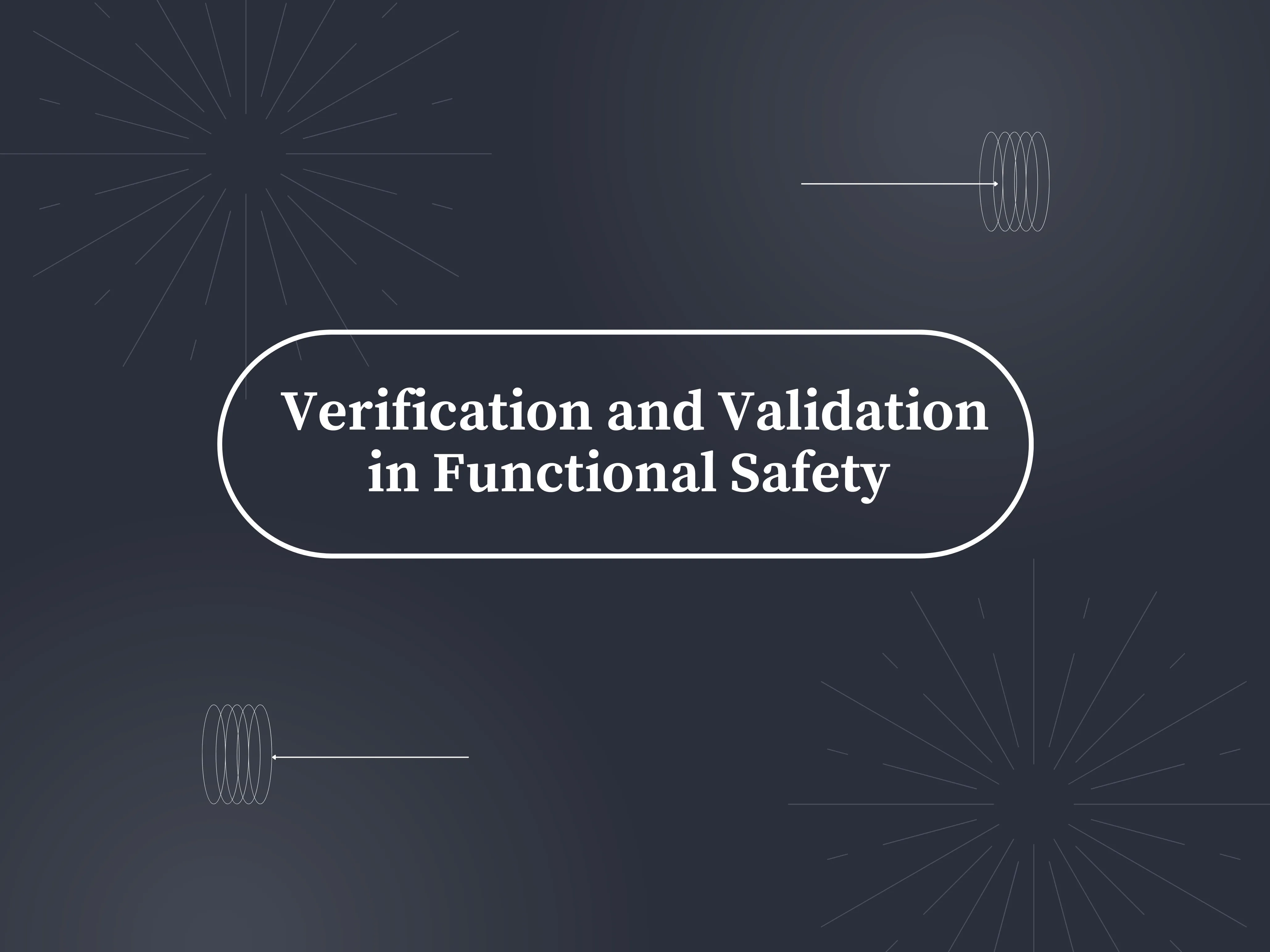Understanding Verification and Validation Verification and validation (V&V) are critical processes in ensuring that a system meets its safety requirements and performs reliably. Think of verification as checking your homework for mistakes, and validation as making sure you did the right homework in the first place.
Why Verification and Validation Matter
Ensuring Compliance: Adhering to safety standards like ISO 26262 or IEC 61508 is crucial for regulatory compliance. V&V processes ensure that all safety requirements are met and documented.
Improving Quality: By catching errors early in the development process, V&V helps improve the overall quality and reliability of the system.
Reducing Risks: Identifying and addressing potential issues before they become critical reduces the risk of system failures and safety incidents.
Building Trust: Demonstrating a commitment to rigorous V&V processes can enhance your reputation and build trust with customers and stakeholders.
Verification at Different Levels
Verification is performed at various levels of the development process to ensure that each component and the system meet the specified requirements:
Component Level: Verifying individual components to ensure they function correctly and meet their specifications.
Integration Level: Verifying that integrated components work together as intended.
System Level: Verifying the entire system to ensure it meets all safety requirements and performs reliably under all expected conditions.
Validation: The Final Check
Validation is the final check to ensure that the system meets the needs and expectations of the end-users. It involves testing the system in real-world scenarios to confirm that it performs as intended and meets all safety requirements.
Tools for Verification and Validation
Using the right tools can make V&V processes more efficient and effective. While simple projects might get by with spreadsheets, complex systems require more robust solutions. Tools like MATLAB/Simulink, and IBM Rational DOORS can help automate and streamline V&V activities, ensuring thorough and accurate results.
How Can This Help You?
Implementing robust V&V processes can significantly benefit your projects:
Risk Reduction: By ensuring all safety requirements are met and traceable, you reduce the risk of safety incidents and system failures.
Efficiency Gains: Clear V&V processes streamline the development process, making it easier to track progress and manage changes.
Customer Trust: Demonstrating a commitment to safety and quality through rigorous V&V can enhance your reputation and build trust with customers and stakeholders.
Why V&V Matters
In essence, V&V is like having a magnifying glass for your safety requirements—it helps you spot any issues early and ensures that your system is safe, reliable, and ready for the real world.
